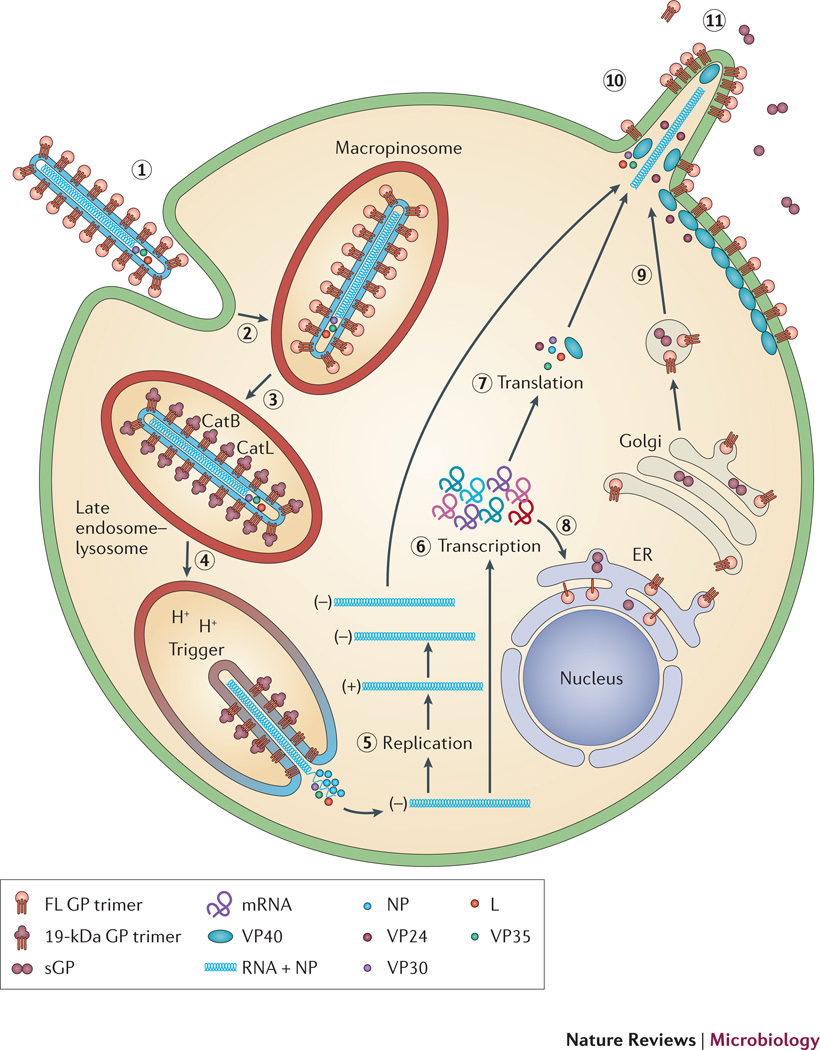Figure 1. Lifecycle of EBOV.
The virus binds to attachment factors and receptors on the cell surface through the viral spike protein, GP (a). The virus is then internalized into a macropinosome (b) and trafficked to an endosomal compartment containing the Cys proteases cathepsin B and cathepsin L (c). These digest GP to a 19-kDa form, which is triggered to initiate fusion between the viral and endosome membrane (d). After fusion, the viral nucleocapsid is released into the cytoplasm, where the genome is replicated (e) and transcribed (f) with the aid of VP35, VP30, and L, and viral mRNAs are translated (g). mRNAs encoding GP are brought to the ER, where GP is synthesized, modified with N-linked sugars and trimerized (h). GP is further modified in the Golgi and delivered to the plasma membrane in secretory vesicles (i). At the plasma membrane the RNP complex and associated viral proteins assemble with the membrane-associated proteins (matrix proteins VP24 and VP40 and GP) and the virions bud from the cell surface (j). Non-structural forms of the glycoprotein, including soluble GP (sGP), are also secreted (k).

